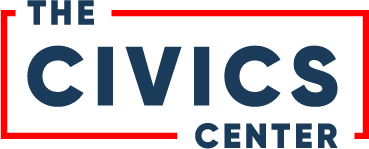Youth voters in New York City high schools could shift the Mayoral race, if they’re registered
Tens of thousands of potential new voters will be graduating from New York City’s high schools in June, and polls show that next month’s primary election for New York City Mayor is a wide-open race. These youth voters could play a decisive role in the outcome of the election, but only if they are registered to vote.
In early 2020, New York State expanded voter pre-registration to 16-year-olds. These pre-registered youth are automatically registered to vote at age 18. This new law created a significant opportunity to address the State’s history of low youth voter participation; however, New York was not prepared to implement it.
It has been well over a year since that law went into effect, and the desired results have yet to materialize. The first independent study of New York State’s pre-registration law, published by The Civics Center last week, found that only 61,567 of the state’s estimated 484,317 16- and 17-year-olds were pre-registered to vote. That’s just 13% statewide—a failing grade by any high school’s standards.
In New York City, the rate of pre-registered 16- and 17-year-olds is even lower: a mere 8%. Richmond County (Staten Island) leads the five boroughs with a 19% pre-registration rate. Well behind is Queens County at 11%, New York (Manhattan) and Kings (Brooklyn) Counties both at 6%, and Bronx County at 4%. Clearly, the new law is not achieving anything close to its intended effect. With a close Mayoral primary election on the horizon, the opportunity for engaging new voters in New York City high schools is too great to ignore. Local boards of elections should coordinate efforts to help students register and pre-register to vote, as they are required to by New York’s voter pre-registration law. And they should do so this month.
Former New York State Senator David Carlucci, who sponsored the pre-registration law, originally praised this new opportunity: “When young people are engaged from any early age they stay engaged . . . By eliminating barriers to register and increasing education, we are strengthening our democracy.” He was most certainly right. Giving young New Yorkers up to two full years to register before becoming eligible to vote provides a host of benefits. It allows them sufficient time to understand voting laws, organize their friends before moving on to work or higher education, and gain confidence in exercising the right for their voices to be heard. Researchers at the University of Virginia and Duke University have also shown pre-registration laws have “positive and significant effects on young voters’ participation rates.”
Extending the right to pre-register to vote to 16- and 17-year-olds, however, is not enough to achieve these important goals. Youth voter registration rates are well below those of older age demographics. Research suggests that this registration gap has been one of the primary reasons that youth voter turnout is consistently lower as well. While the blame for low youth registration rates is often placed on young people, this presumption obscures the failures of our institutions.
When New York first enacted voter pre-registration at age 16, few county boards of elections had prepared for the change in the law. A survey of 36 county boards conducted in November 2019 showed that only one had made a concerted effort to effectively implement the new law. Only one county board of elections reported a concerted effort to educate teenagers about pre-registration at 16, and none of the surveyed boards of elections detailed plans to track pre-registration numbers.
New York State Election Law § 5-507(2) requires local boards of elections “to adopt policies to promote student voter registration and pre-registration” and suggests they collaborate “with county boards of elections to conduct voter registration and pre-registration in high school.” Though this legislation is well-intentioned, it has not been put into action. Pre-registration laws will not work unless boards of elections adopt the policies that the state law requires and unless they are backed by funding and mechanisms for holding boards of elections accountable.
The Board of Regents took an important step this week in proposing a “seal of civic-readiness” that could count toward students’ graduation requirements. The proposal, which is meant to counteract low voter participation by promoting civics education, is not expected to be voted on until September. While this change would be significant, both education and election officials must act more promptly to avoid graduating a class of students this June who are not registered and not ready to vote.
The Mayor’s race presents a unique opportunity to both raise awareness about the State’s pre-registration law and to register large numbers of future voters before graduation. An estimated 82,000 18-year-olds will be able to vote in the general election for New York City Mayor who were too young to vote this past November. Approximately 48,000 of them will have turned 18 between the 2020 general election and the May 28, 2021 registration deadline for the upcoming primary election. With most classes in session until late June, local boards of elections and high schools in New York City have ample time to provide their students with meaningful opportunities to register and pre-register to vote. If registered, these youth voters could have a pivotal impact on deciding the next Mayor of New York City.
